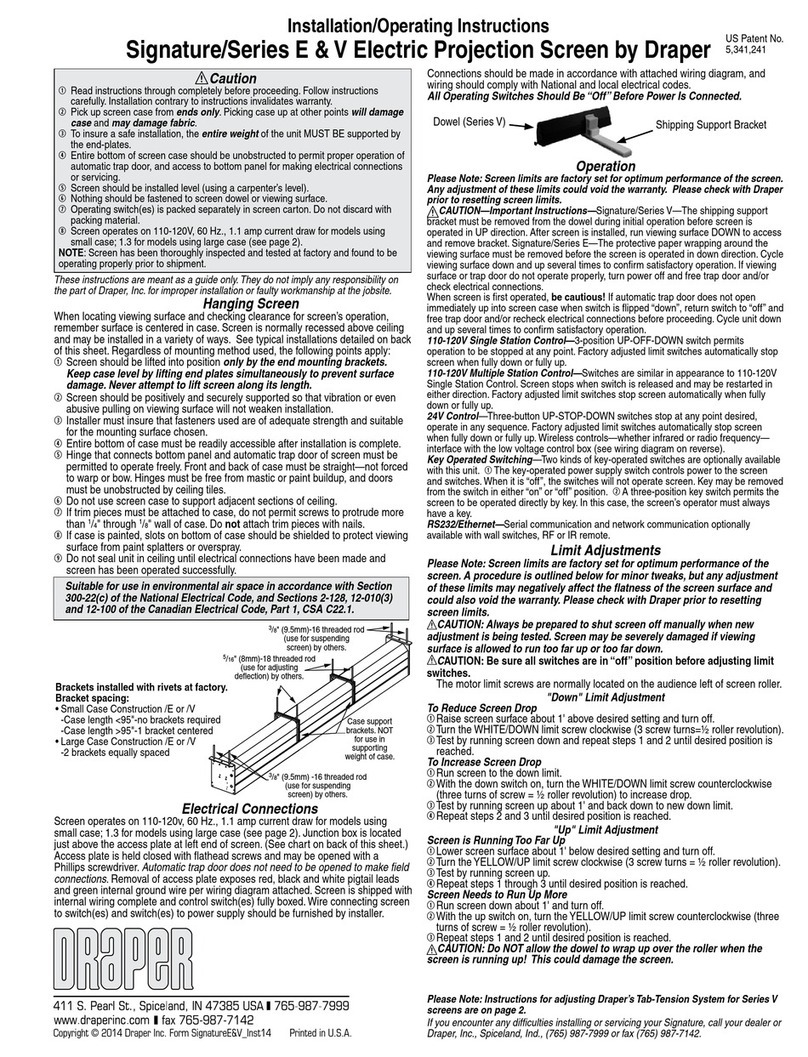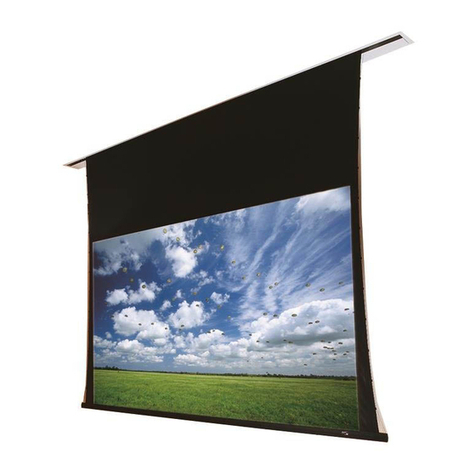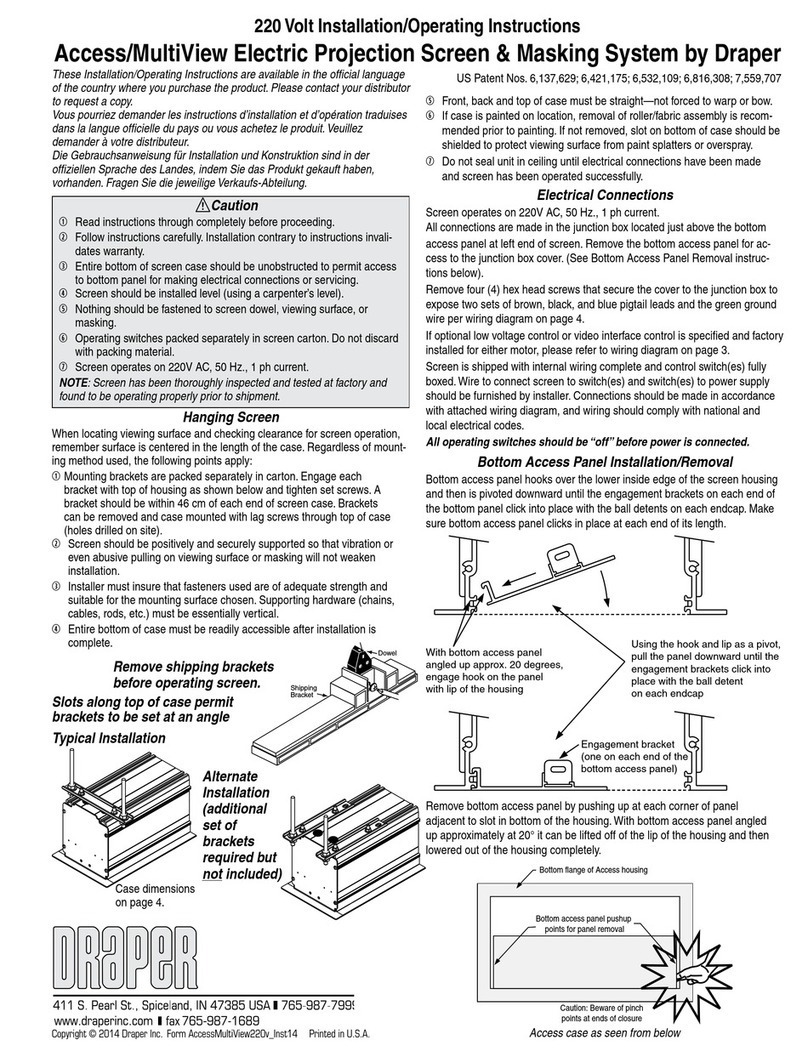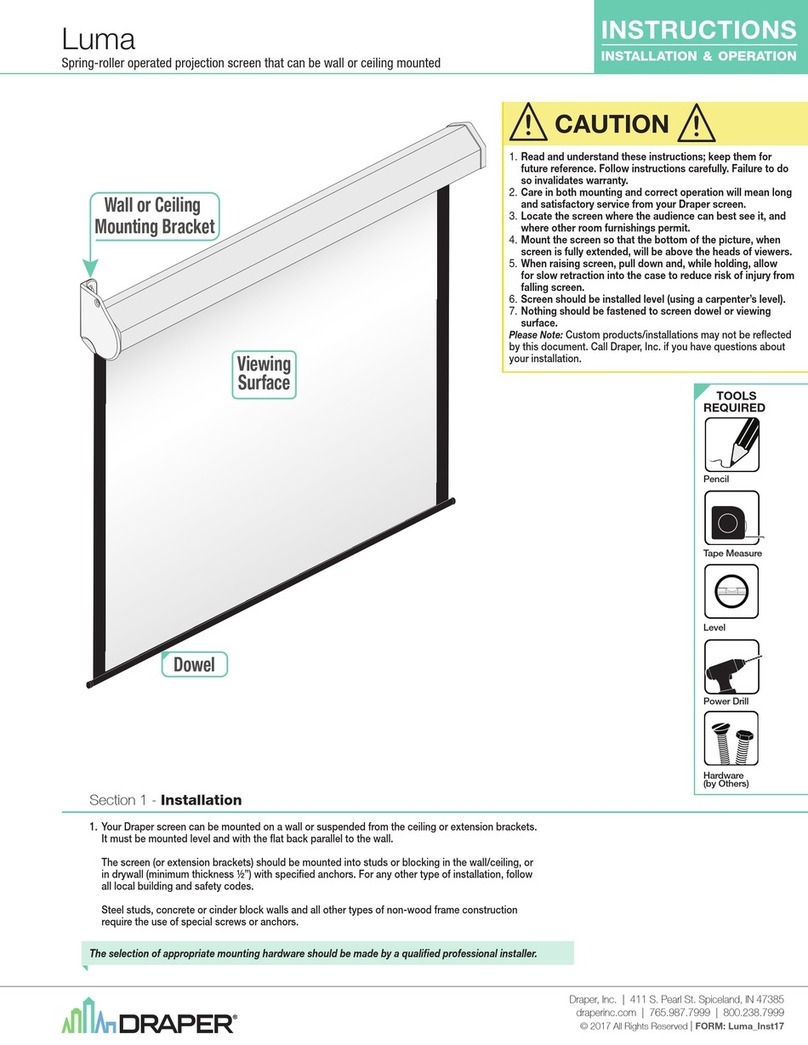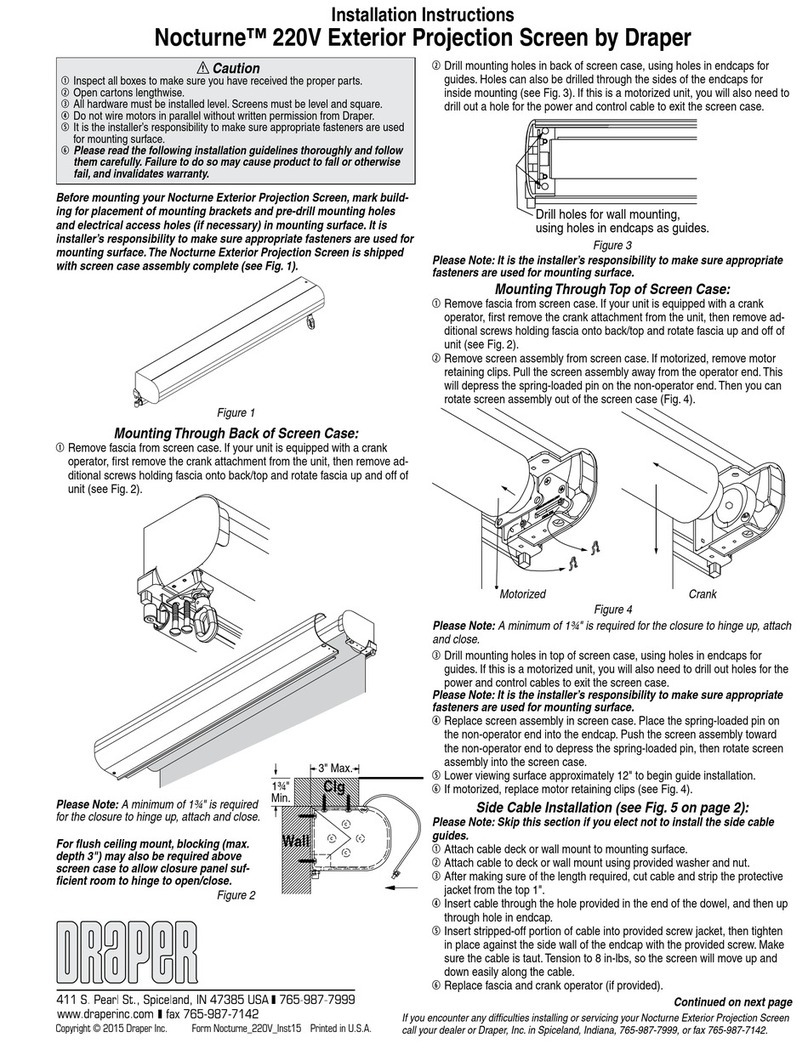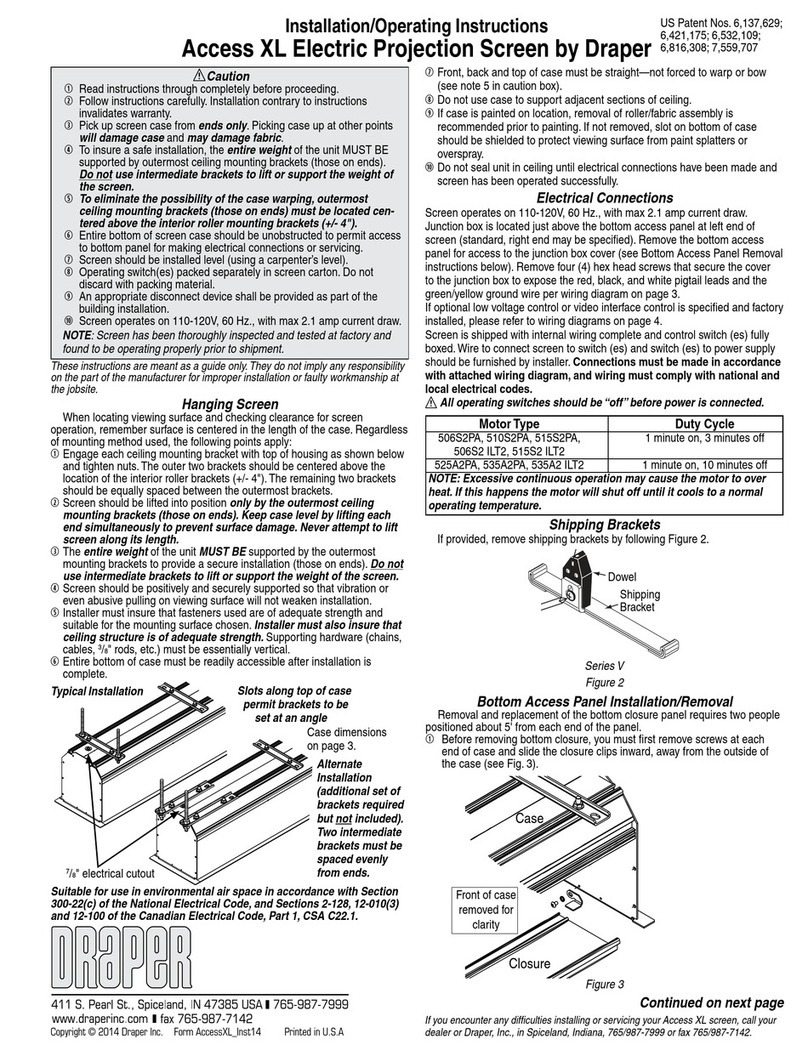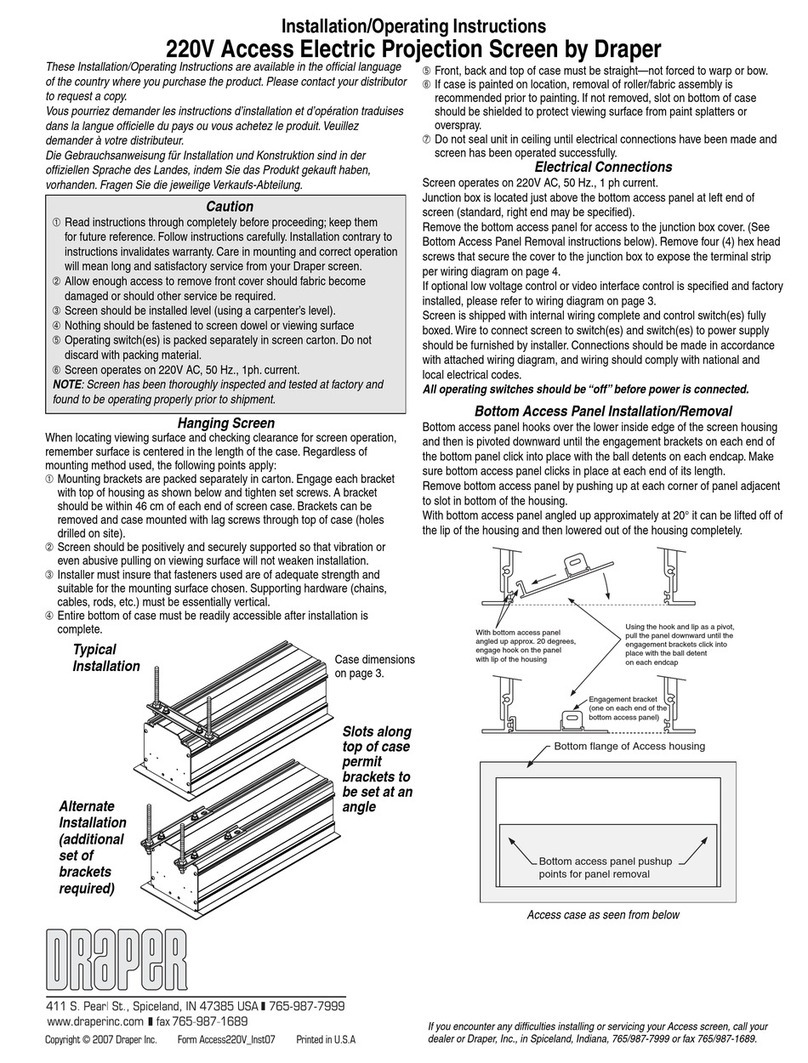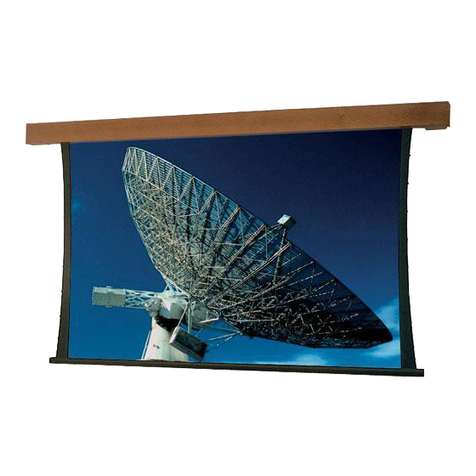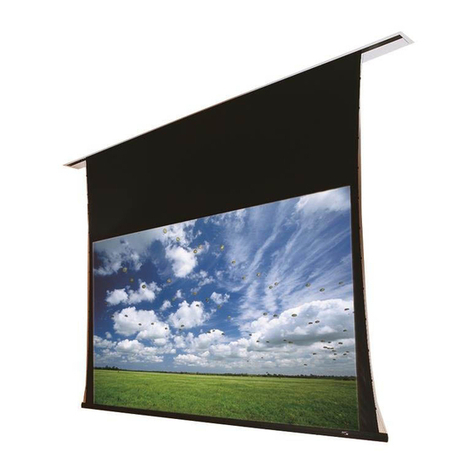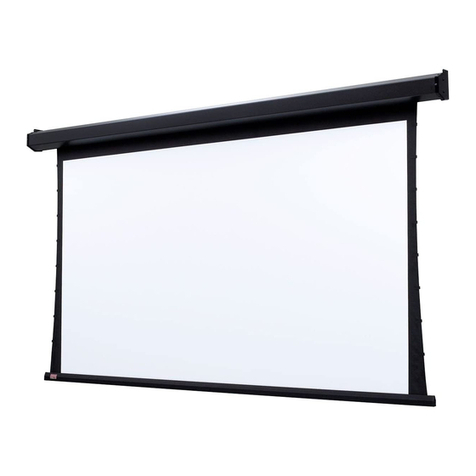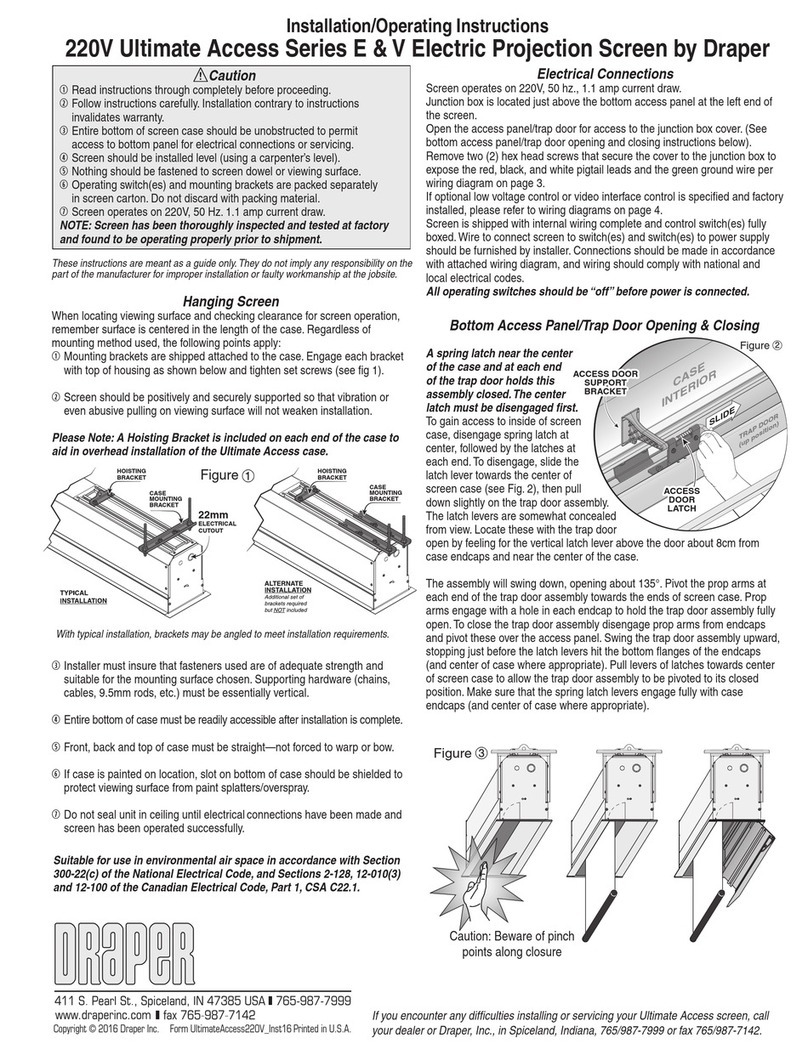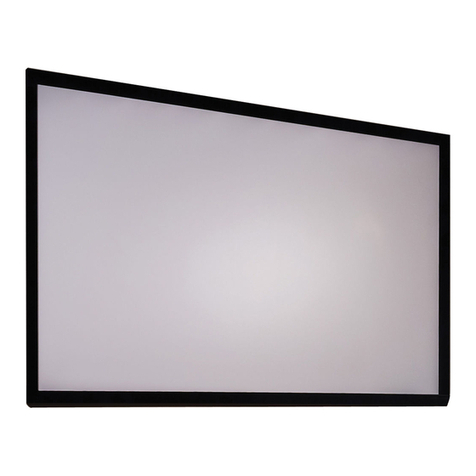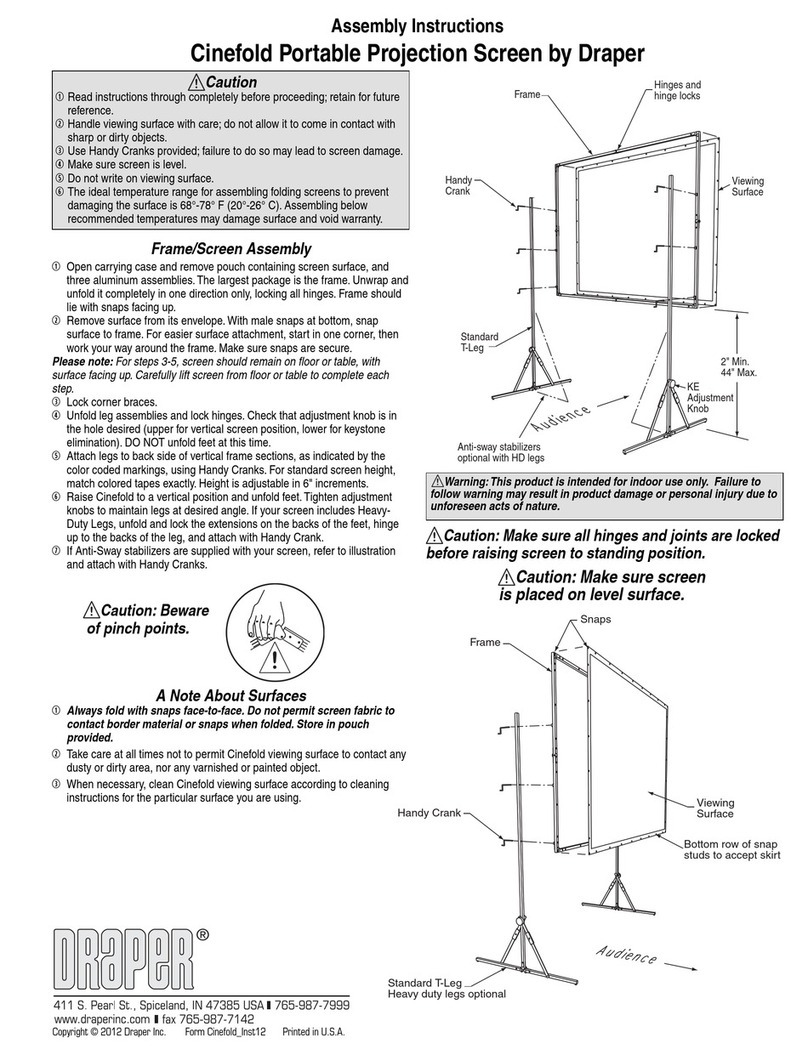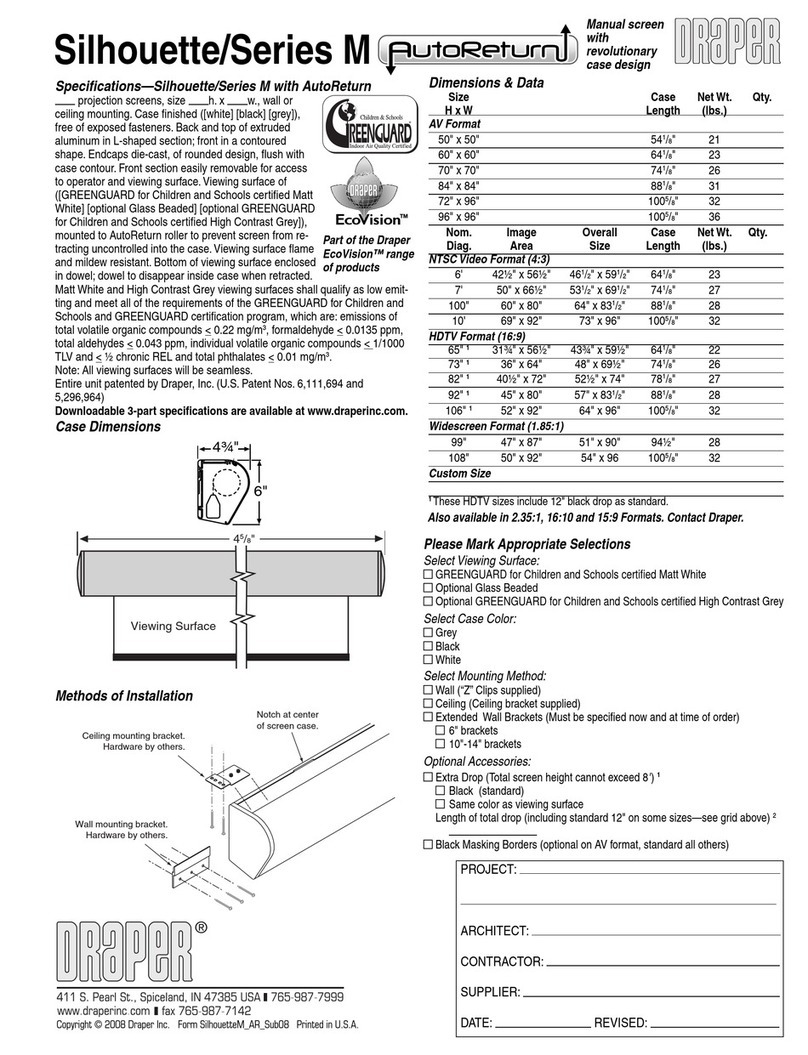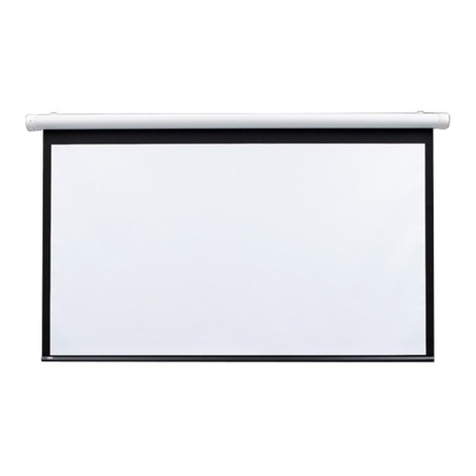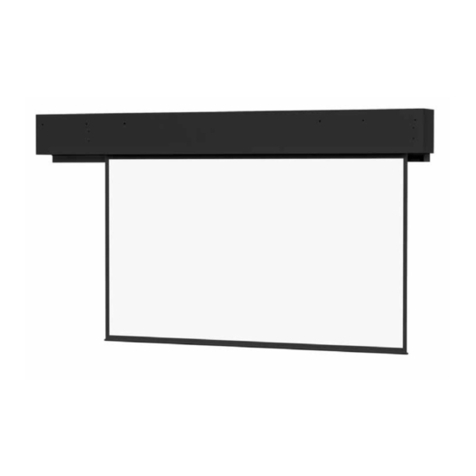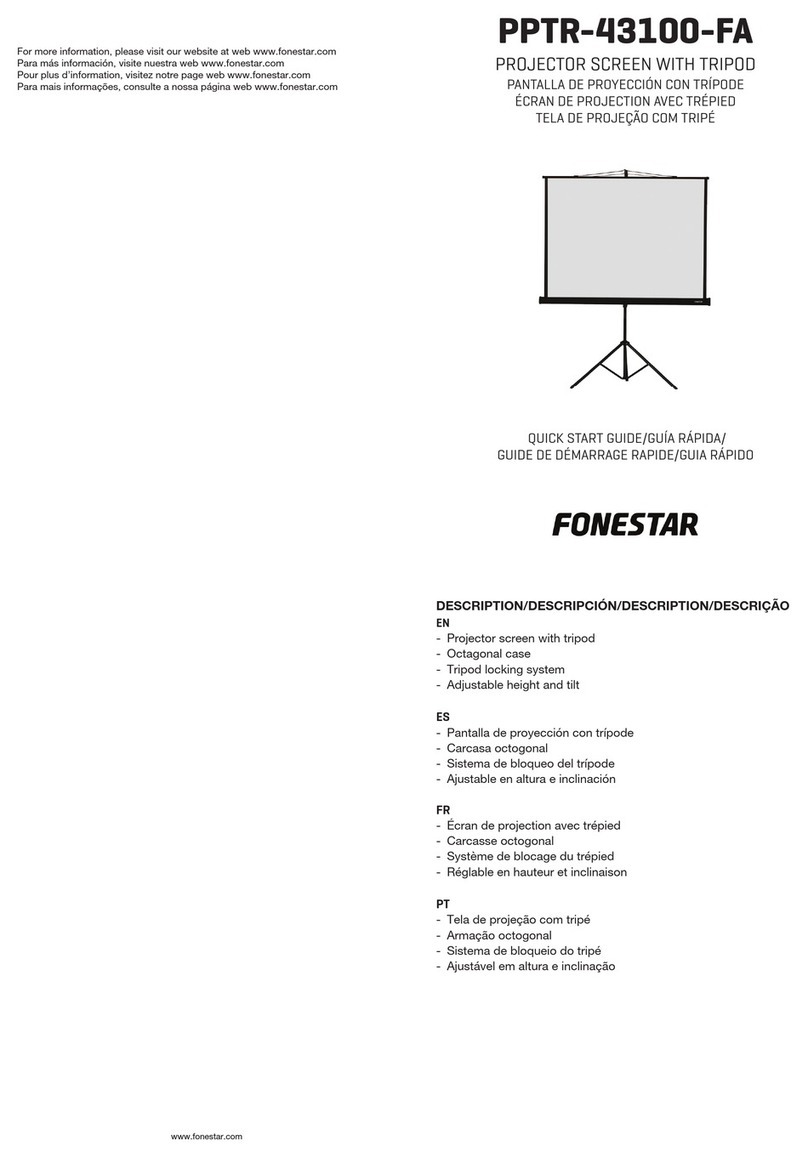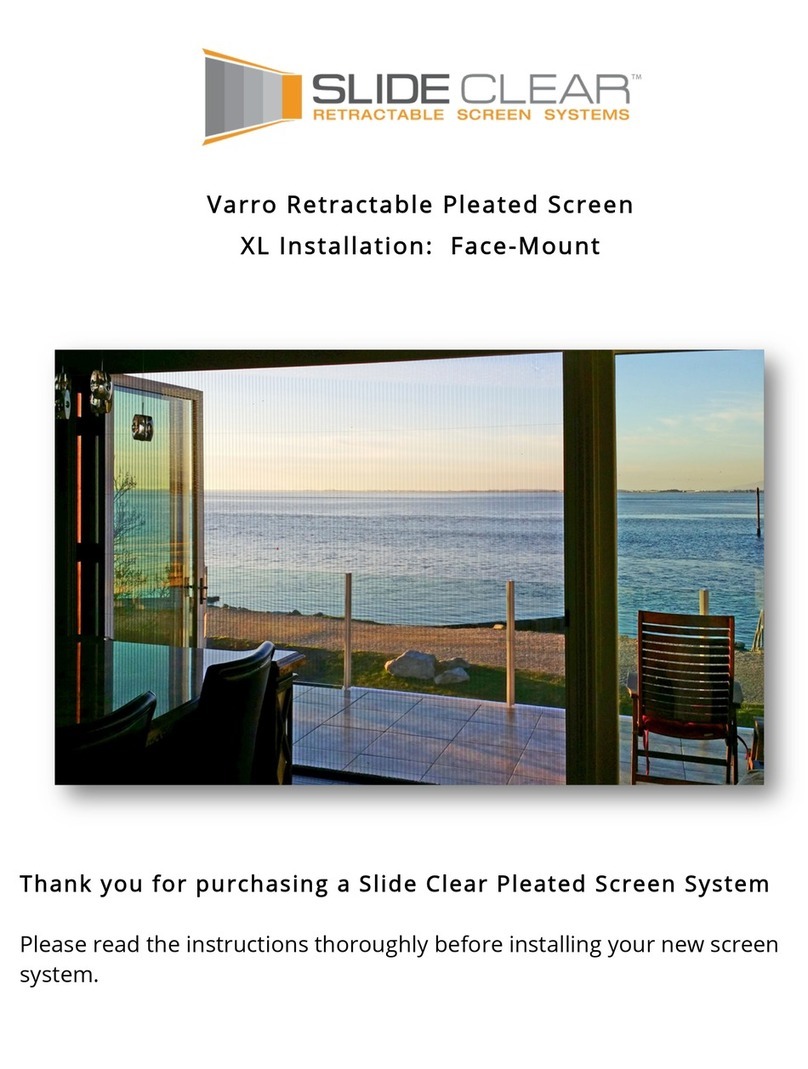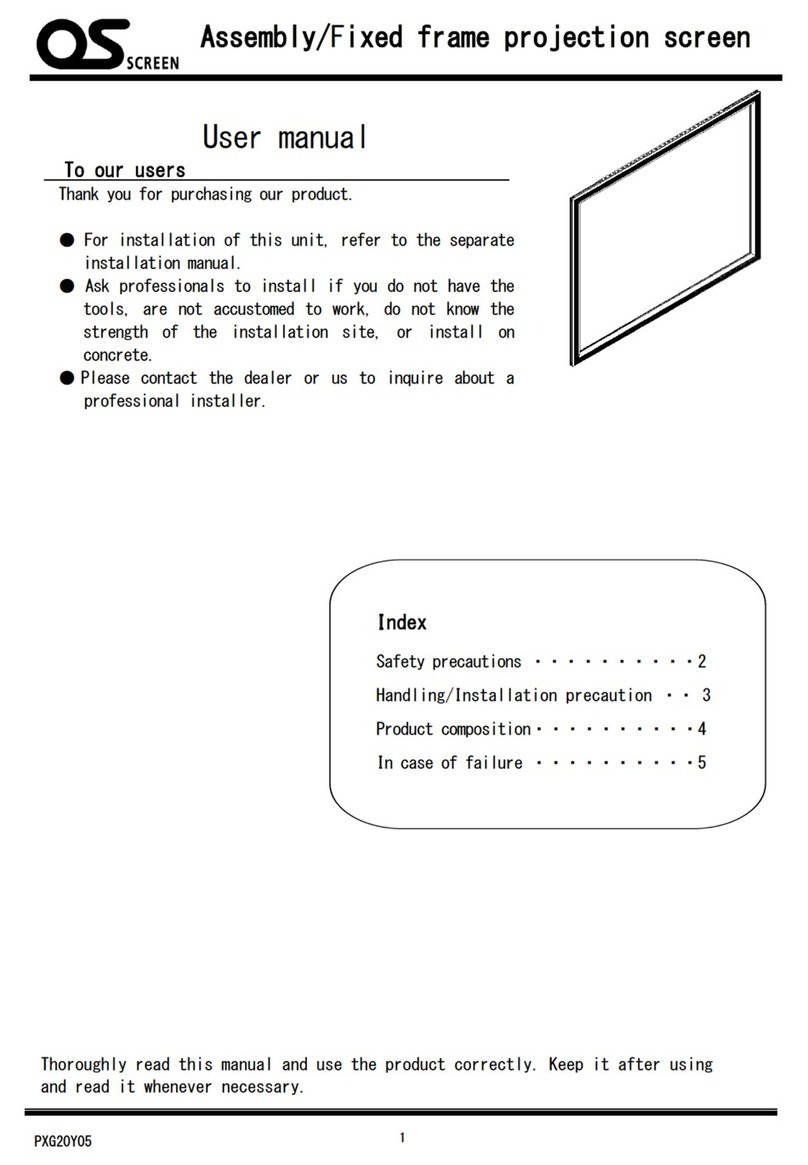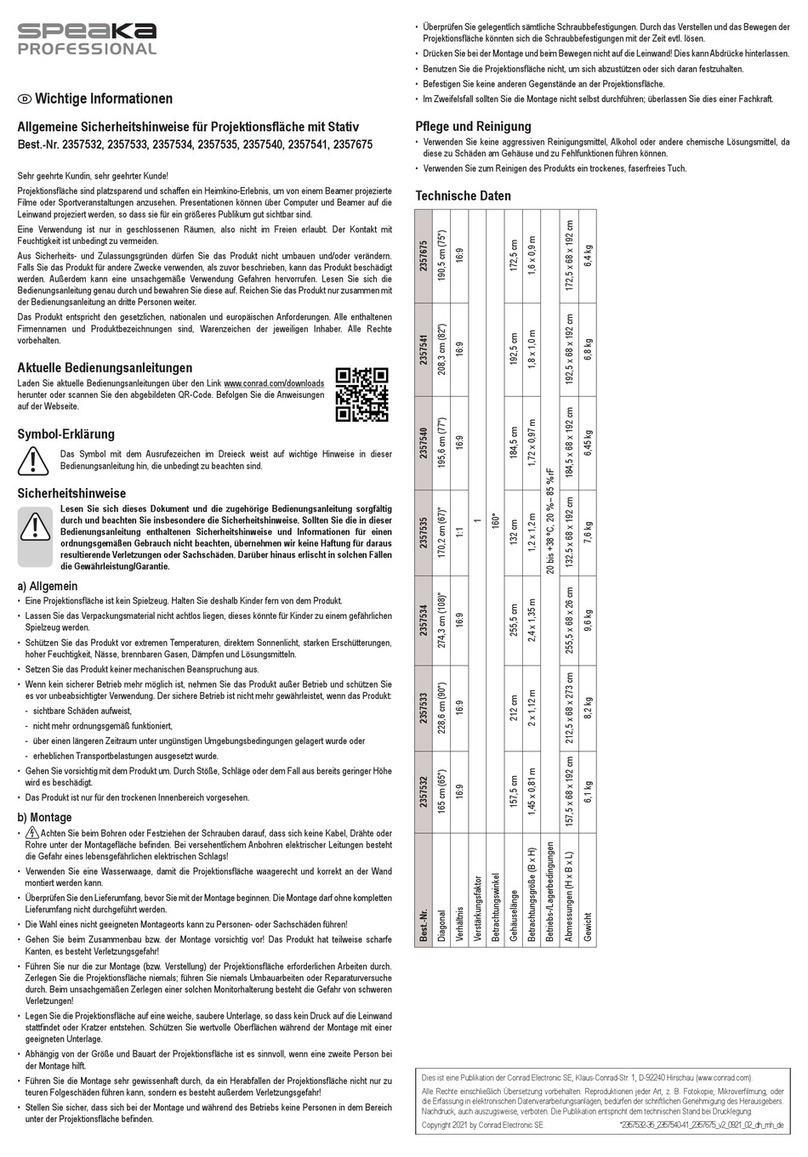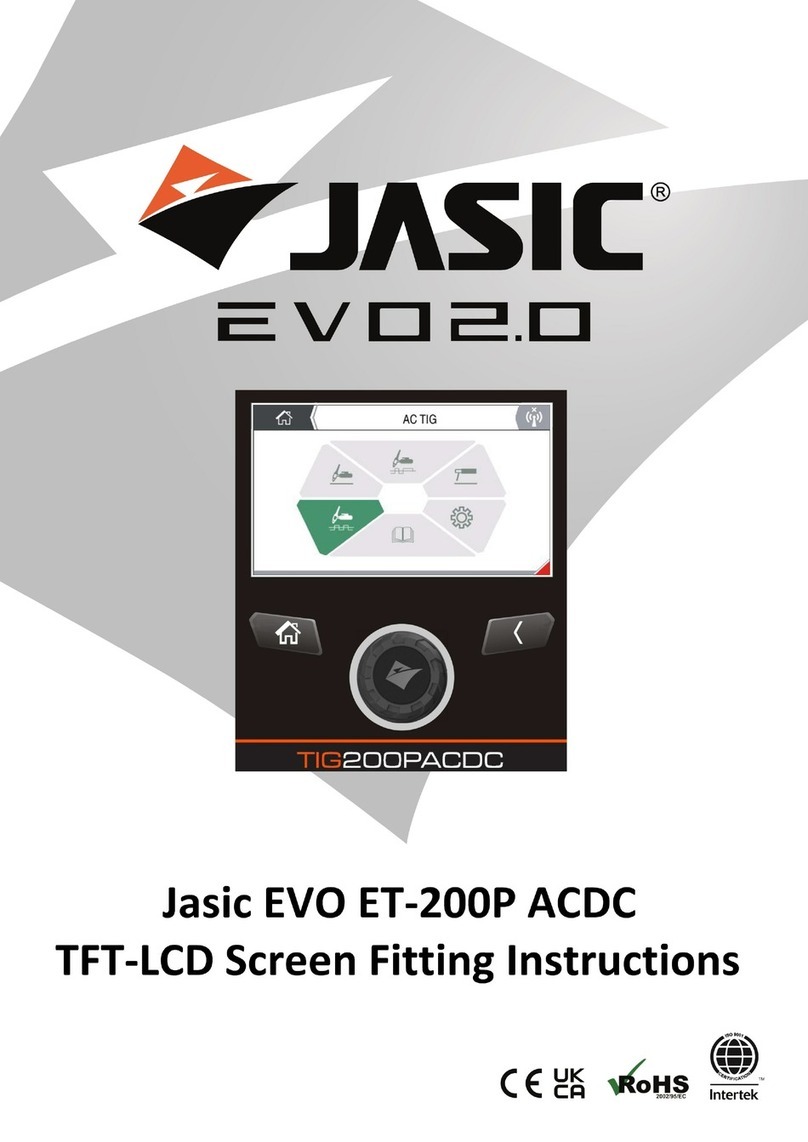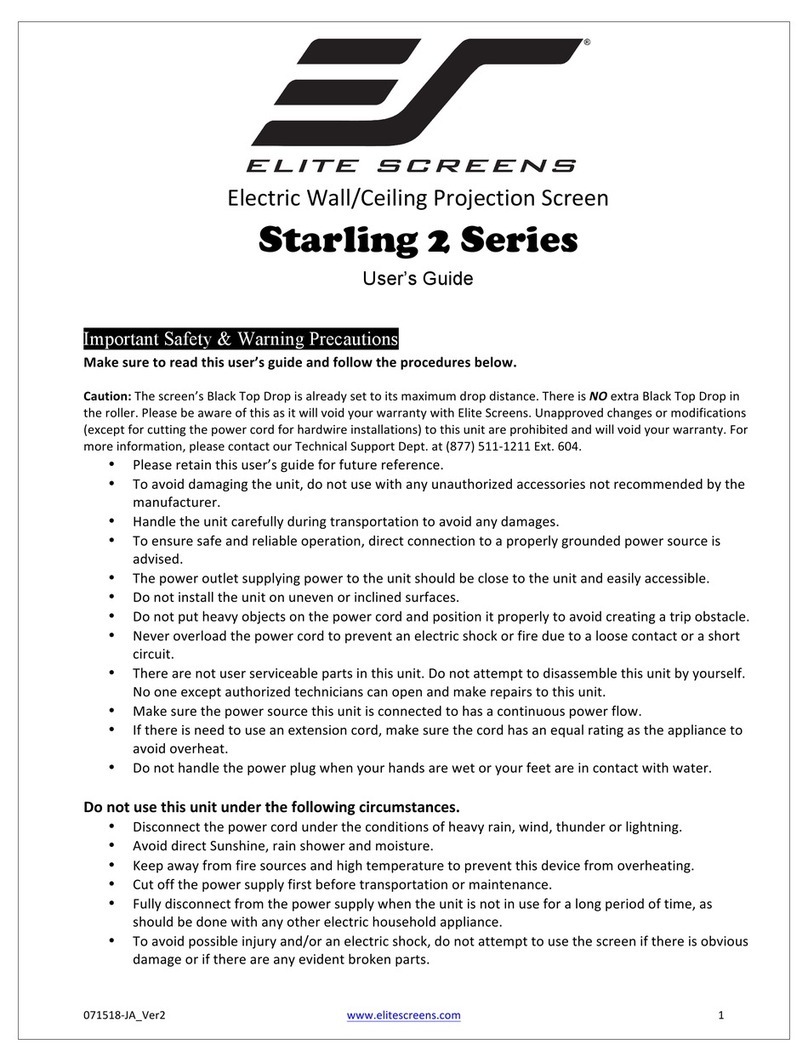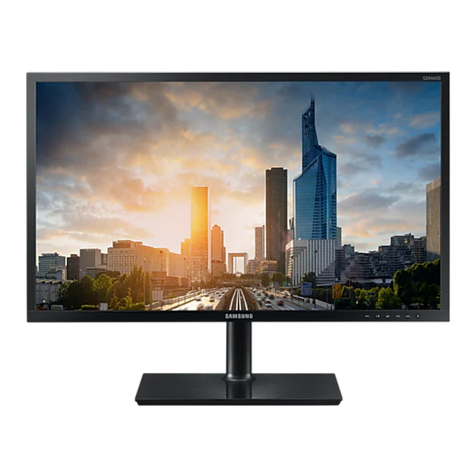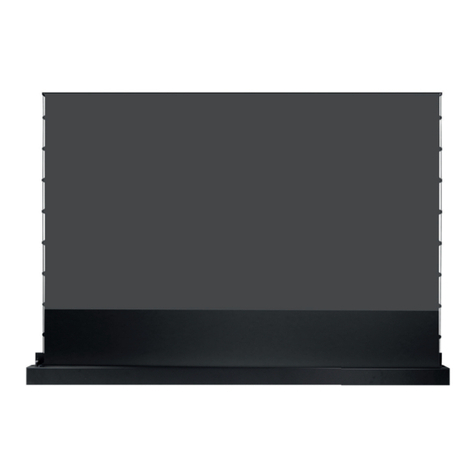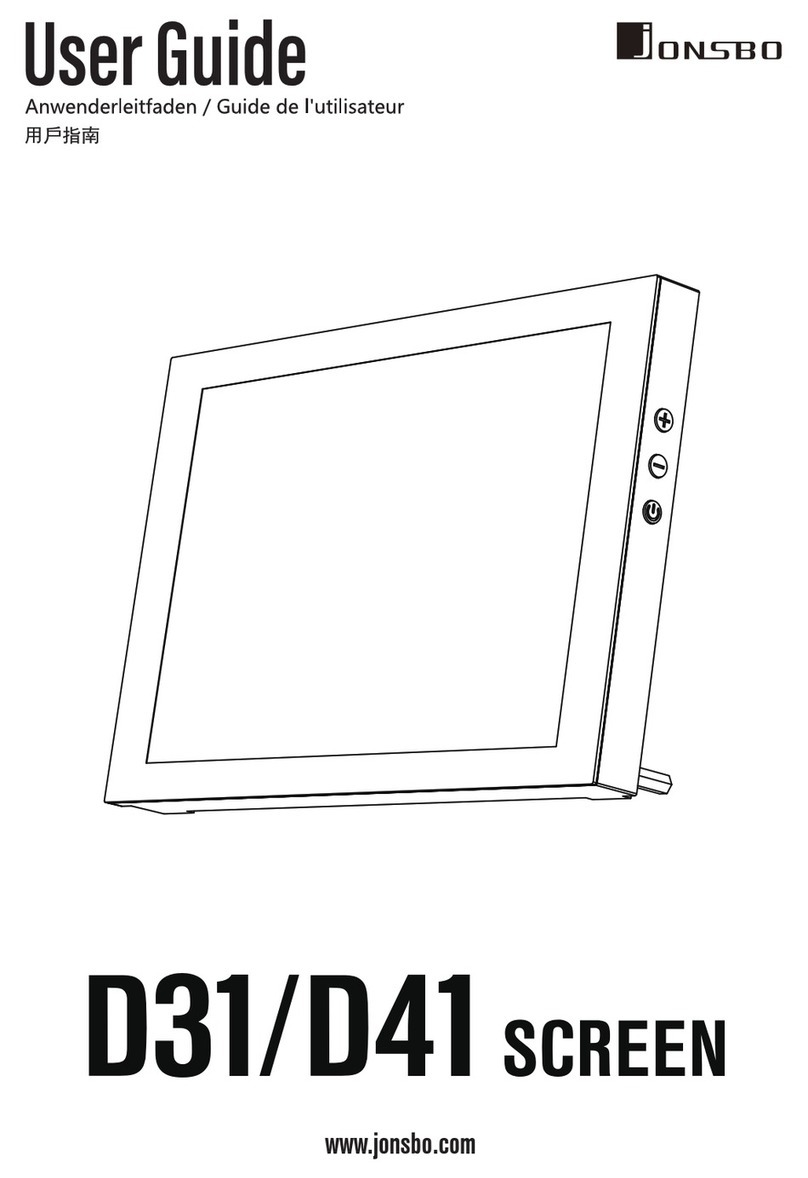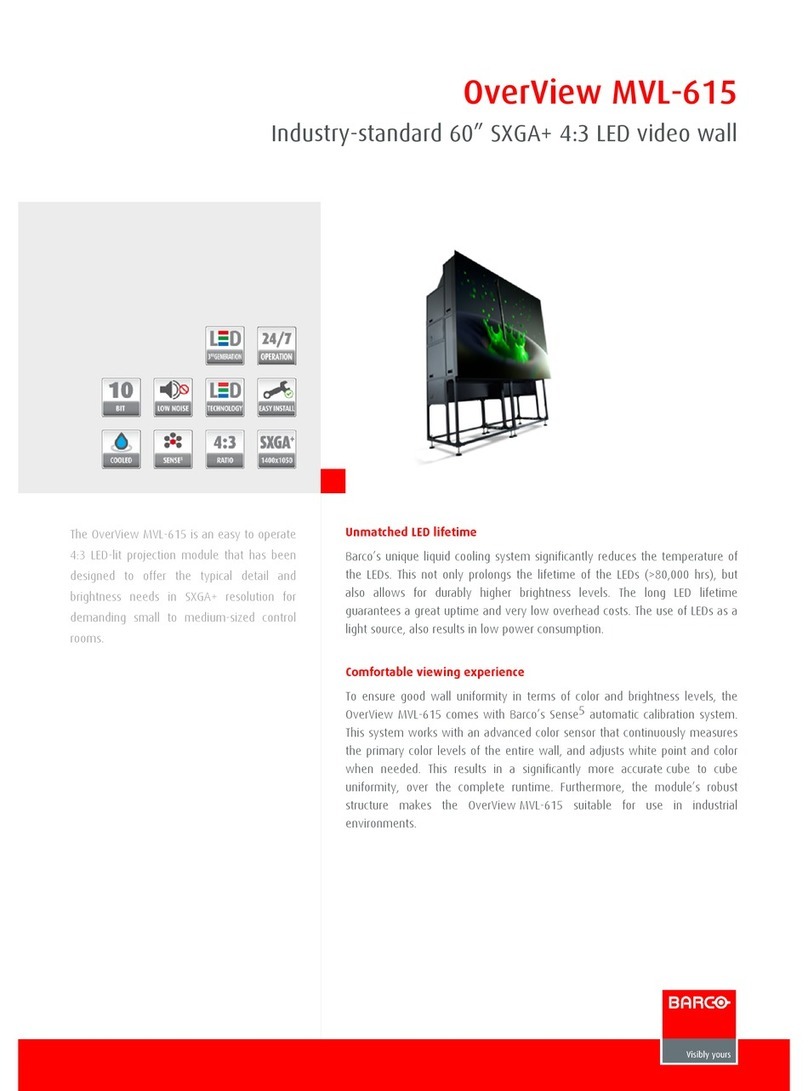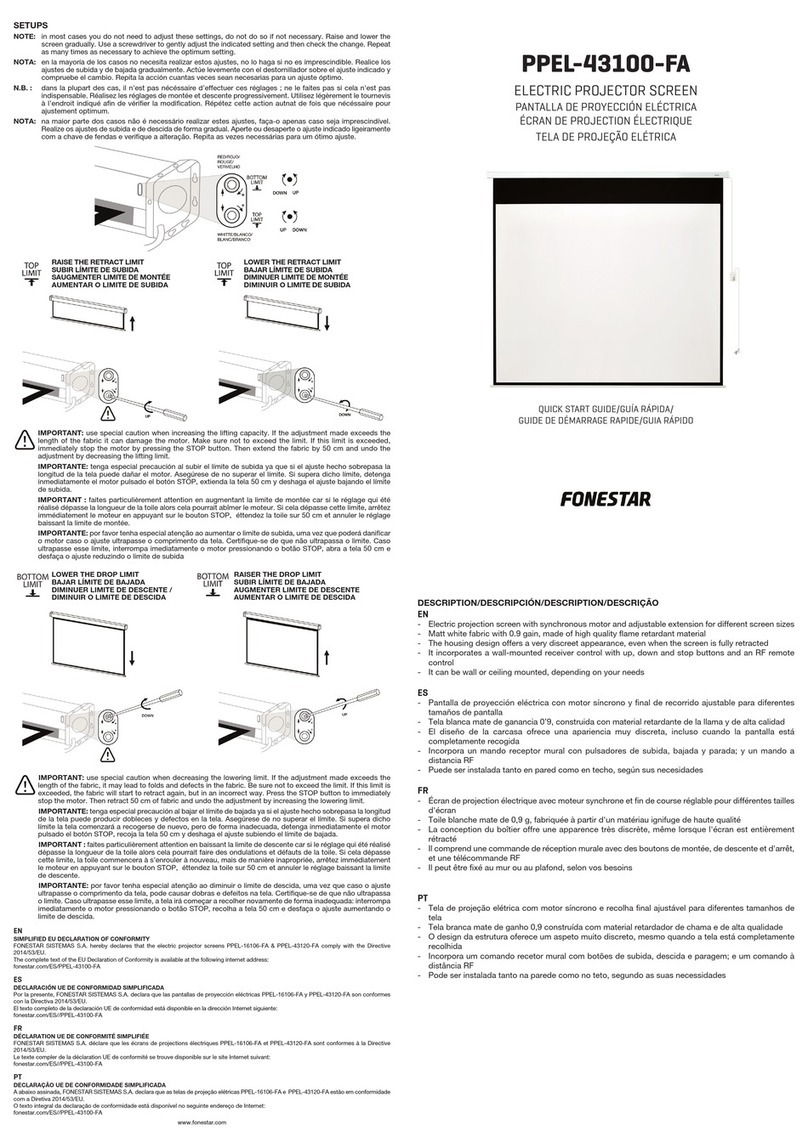
Copyright © 2009 Draper Inc. Form Rolleramic_Inst09 Printed in U.S.A.
Wall Installation—
Brackets should fasten to studding or other structural supports within wall.
Suspended Installation—
Chains should be attached to solid beams or rafters above screen. If possible,
screen mounting brackets should be positioned so chains hang vertically.
Turnbuckles should be connected between chains and mounting brackets. After
screen has been suspended, turnbuckles should be adjusted so that screen hangs
level.
Recessed Installation—
Recess should be constructed to fit screen case with brackets (see “Case
Dimensions” on back page). Design recess so that entire bottom of screen case
is unobstructed to permit access to bottom panel, screen roller and surface for
servicing if required.
Hanging Screen
General:
When locating viewing surface and checking clearance for screen operation,
remember surface is not centered in screen case: see dimensional drawings on
reverse. All installations should observe these important criteria:
➀Screen should be positively and securely supported so that vibration or even
abusive pulling on viewing surface will not weaken installation.
➁Installer must insure that fasteners used are of adequate strength and suitable
for the mounting surface.
➂Entire bottom of case must be readily accessible after installation is complete.
Be sure the access door opens freely for adjustments and service.
➃Screens through 14' wide have 2 mounting brackets; wider screens have 3.
Brackets should be located along case to line up with supporting beams or
studding. Left hand bracket is normally secured just to right of access door and
right hand bracket about one foot from right end of case.
➄Installer should make sure mounting brackets are flush with the sides of the
case to provide stability when hanging screen.
Please Note: Mount the case using the two end brackets first. If a center
bracket is provided, mount it last. The center bracket is designed to prevent
sagging of the case, and must be mounted so that it is level with the others
and does not force the screen case up.
➅Make sure the top of the screen case's bottom board at no point touches the
roller/viewing surface.
➆Do not use screen case to support adjacent sections of ceiling.
➇If trim pieces must be attached to case, do not permit screws to protrude
through ¾" wall of case. Do not attach trim with nails.
➈If case is painted, viewing surface slot must be shielded to protect viewing
surface from paint splatters and overspray.
➉Do not seal unit in ceiling until electrical connections have been made and
screen has been operated successfully. Screen must always be installed level
so that fabric will not roll incorrectly or wrinkle.
These instructions are meant as a guide only. They do not imply any responsibility
on the part of Draper, Inc. for improper installation or faulty workmanship at the
jobsite.
Installation/Operating Instructions
Rolleramic Electric Projection Screen by Draper
Electrical Connections
Screen operates on 110-120V, 60 hz. AC, .78 amp draw (1.35 with heavy duty
motor).
Screens are shipped with internal wiring complete, with all switches (fully boxed)
and a wiring diagram. Wire connecting screen to switch (or switches) and switch to
power supply should be supplied by installer. Wires should be connected following
the wiring diagram provided, and all wiring should comply with local and national
electrical codes.
All operating switches should be “Off” before power is connected.
Operation
Remove all packing before attempting to operate screen. When screen is first
operated, be cautious! Cycle unit down and up several times to confirm
satisfactory operation.
110-120V Single Station Control — 3-position up-off-down switch permits
operation to be stopped at any point. Factory adjusted limit switches automatically
stop screen when fully down or fully up.
110-120V Multiple Station Control—Switches are similar in appearance to
110-120V Single Station Control. Screen stops when switch is released and may
be restarted in either direction. Factory adjusted limit switches stop screen
automatically when fully up or fully down.
24V Control — Three-button up-stop-down switches stop at any point desired,
operate in any sequence. Factory adjusted limit switches automatically stop screen
when fully up or fully down.
Key Operated Switching — Two kinds of key-operated switches are optionally
available with this unit.
➀The key-operated power supply switch controls power to the screen and
switches. When it is “off”, the switches will not operate screen. Key may be
removed from the switch in either “on” or “off” position.
➁A three-position key switch permits the screen to be operated directly by key. In
this case, the screen’s operator must always have a key.
RS232/Ethernet—Serial communication and network communication optionally
available with wall switches, RF or IR remote.
Adjustments
Screen has been factory set and should not normally require further adjustment.
However, if you desire to change the “up” and “down” stopping positions, proceed
as follows:
CAUTION: Be sure all switches are in “off” position before adjusting limit
switches. Always be prepared to shut screen off manually when new adjustment is
being tested. Screen may be severely damaged if viewing surface is allowed to run
too far up or too far down.
CAUTION: Do not loosen coupling setscrews from the roller shaft, or the
screen surface will rapidly unroll and fall. If setscrew must be loosened actions
should be taken to prevent the roller from turning.
Adjusting “fully up” position — “Up” limit switch is located on right side of
limit switch assembly, immediately behind access door to case. Right hand, hex
head machine screw contacts limit switch button to shut screen off. Turning this
machine screw clockwise will allow surface to run farther up into case. Turning it
counterclockwise will cause screen to stop sooner, farther out of the case.
Adjusting “fully down” position — “Down” limit switch is located on left side of
limit switch assembly, immediately behind access door to case. Left hand, hex
head machine screw contacts limit switch button to shut screen off. Turning this
machine screw clockwise will allow surface to run farther down before stopping.
Turning it counterclockwise will cause screen to stop in a less extended position.
At no time should fabric be unrolled far enough to expose any part of screen roller.
Make all adjustments in small increments, and be sure nut on machine screw is
tight against steel limit switch support before closing access door.
®
Caution
➀
Read instructions through completely before proceeding.
➁
Follow instructions carefully. Installation contrary to instructions invalidates
warranty.
➂
Entire bottom of screen case should be unobstructed to permit access to
bottom panels for making electrical connections or servicing.
➃
Screen should be installed level (using a carpenter’s level).
➄
Nothing should be fastened to screen dowel or viewing surface.
➅
Do not touch screen while in motion.
➆
Operating switch (es) packed separately in screen carton. Do not discard
with packing material.
➇
Screen operates on 110-120V, 60 hz., .78 amp draw (1.35 with heavy duty
motor).
NOTE: Screen has been thoroughly inspected and tested at factory and
found to be operating properly prior to shipment.
Universal Mounting Bracket
may be suspended from above,
or mounted to wall. Each bracket
consists of a front and back piece
bolted together. 2 supplied on
screens up to 14' wide. 3
supplied on larger screens.
Case
Conduit connection
on left end of case.
Viewing Surface
If you encounter any difficulties installing or servicing your Rolleramic screen, call your
dealer or Draper, Inc., Spiceland, Indiana, (765) 987-7999, or fax (765) 987-7142.
